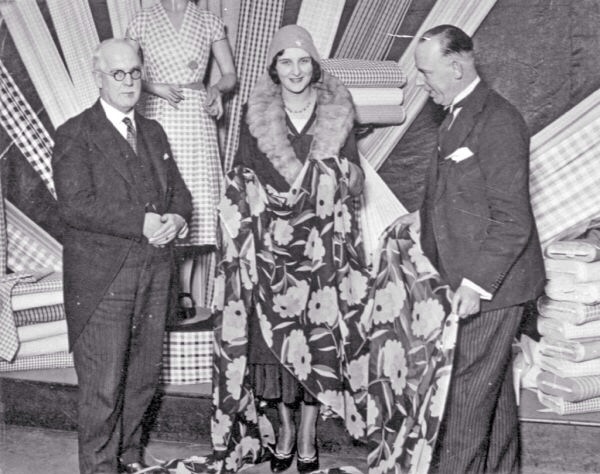A name of a nineteen year old weaver by the name of Frances Lockett is probably remembered by few today but back in 1930, tens of thousands would line the streets of Hyde to get a glimpse of her.
Frances was making her first appearance in her hometown as the newly crowned cotton Queen of Great Britain and research by Rebecca Conway has shed new light light on a fashion created in the 1930’s to improve the fortunes of the ailing British cotton trade during a period when exports of the material had dropped two-thirds since the years immediately preceding the First World War and workers faced wage cuts, through the selection of a beautiful young woman as an official representative of the industry.
Rebecca tells us that the idea for the piece came after she was looking through a lot of copies of the Cotton Factory Times from the 1930s and kept seeing references to the contest.
My mum had told me about the Cotton Queen when I was younger so I was intrigued and decided to look into it further. My grandparents had actually known Francess Lockett and were friends with her family so it seemed like a strange coincidence! I soon realised the significance of the Cotton Queen title and the way that the competition provides an unparalled view of some of the key changes in the ways that young mill girls were presenting themselves in this period
.
Rebecca writes of how the first official hometown appearance of Frances Lockett, a nineteen-year-old weaver,
prompted ‘ecstasies of enthusiasm unparalleled in the history of [the] town and industry’ A convoy of mounted police, two brass bands, and twelve cars carried the Cotton Queen to the Town Hall where crowds of eager onlookers gathered as she appeared on a balcony, ‘a radiant figure in crown and cloak and sweeping train’.At a civic reception, the Mayor of Hyde spoke proudly of her success; ‘There is’, he said, ‘no better type of womanhood than the factory girl of Lancashire and Cheshire’.
The Cotton Queen Quest was created during a transformative era for female wage earners in England who benefited from higher pay, shorter working hours, and increased access to consumer goods.The competition was open to young women who worked in the industry and lived in a number of towns in Lancashire, Cheshire, and Derbyshire but was quickly dubbed ‘She’s a Lassie from Lancashire’
As Rebecca says,”The national Cotton Queen would receive a year off work to complete her duties in addition to a cash prize, lots of gifts of clothes and make up and free trips around the country. ”
I think that it would’ve been an incredible adventure! The experience would have been so far removed from what most mill girls had previously experienced – staying in expensive hotels, visiting London and meeting politicians and famous people (mainly journalists, musicians, some actors)
Several of the past winners later got jobs outside of the cotton industry or married men in professions which meant that they didn’t have to work so it changed their lives quite profoundly. Lockett was a celebrity in Hyde until her death.
You can read the full article HERE in the December addition of







